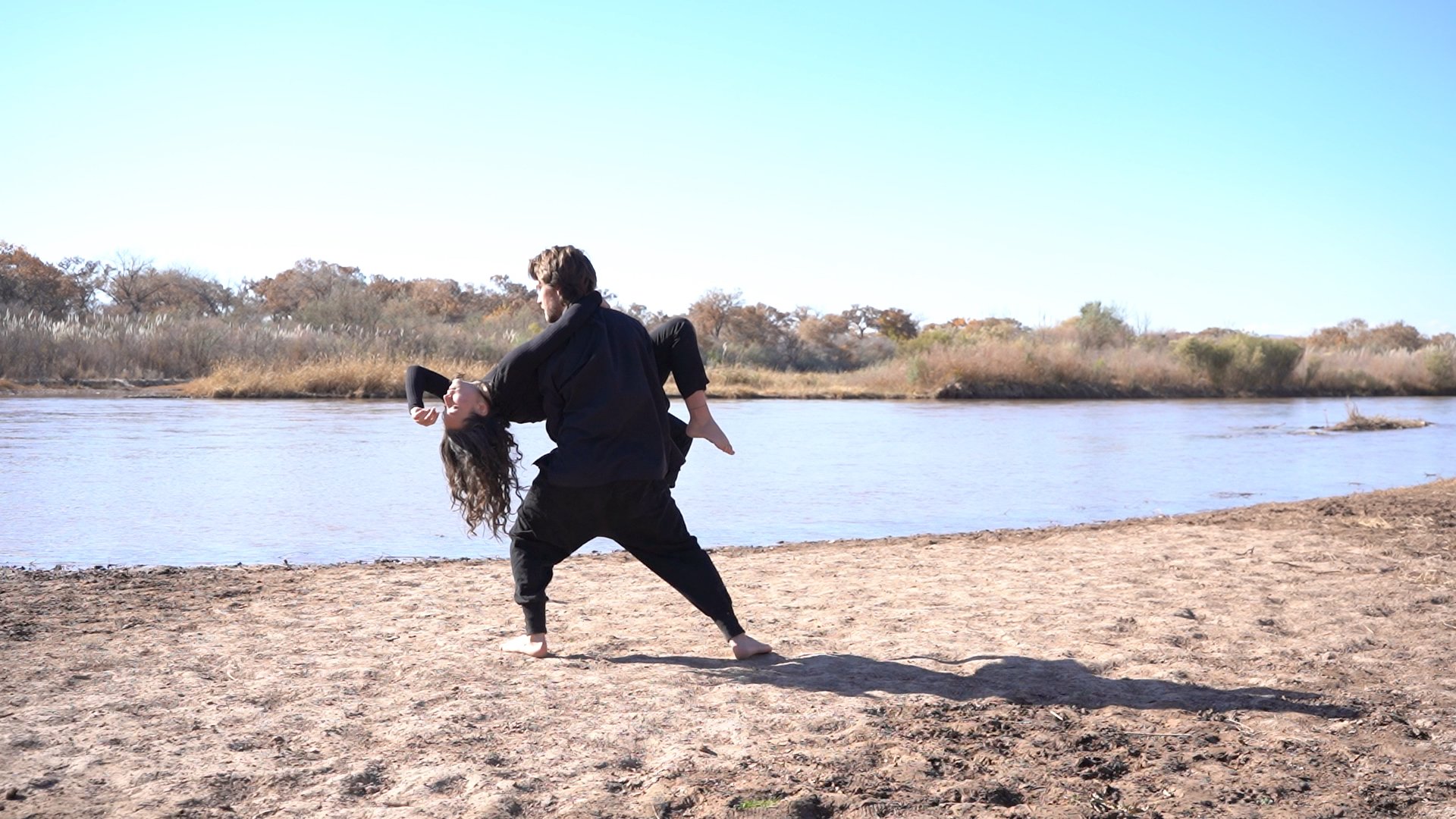
The sonification of…
DANCERS + PERFORMERS
What if your movements could control sound?
Sonification refers to the process of using cutting-edge technology to convert the movement and location of dancers and performers into a rich auditory experience. By closely synchronizing their movements with sound, performers can create immersive soundscapes that enhance their narratives and captivate audiences. This innovative approach transforms the dancer's body into a unique musical instrument and opens up endless possibilities for artistic expression, by blending movement, location, and technology with the power of sound.
What if... dancers and performers move so seamlessly with their sounds that it's as if they are the source of the sound itself. With rapid and intricate movements, cutting-edge technology could transform a dancer's body into a unique musical instrument in real time.
Or envision a performer walking on stage. With each step forward, the sound of a footstep in water echoes around them. When they step backward, the sound of breaking glass fills the air. Tightly synchronized sound as a metaphor can elevate the story and experience.
To make these imaginations come true, I've developed a special sonification system that fuses the movement and location of dancers and performers with state-of-the-art motion-tracking technology. This allows us to activate, generate, and modulate music, as well as field and voice recordings. Check out some examples below to get a taste of the exciting experiments I'm working on!
MOVEMENT: ACCELERATION, ROTATION++
Motion sensors play a crucial role in the creative expression and sonification of dance, as they track acceleration, orientation, angular velocity, and magnetic field disturbances based on a dancer's movement. By analyzing these movements, choreographers can craft a more precise and expressive performance that aligns with their vision. Additionally, these sensors help convert motion data into sound, introducing a new dimension to performances and immersing audiences in a multi-sensory experience, ultimately making performances more dynamic, interactive, and participatory.
Harnessing motion sensors in dance serves as a powerful tool for generating fresh ideas, exploring novel forms of expression, and expanding the boundaries of dance as an art form. When used effectively, this technology empowers choreographers to create more innovative and expressive performances, pushing the limits of what's possible in the dance world.
In this video, acceleration, orientation, and angular velocity are sonified.
LOCATION: PROXIMITY, ZONES++
Tracking the proximity, distance, and location of multiple dancers and performers is important in dance for linear, non-linear, and improv storytelling. By tracking their positions, the choreographer can create a sense of spatial relationships and interactions between the characters, and provide a more immersive and engaging experience for the audience. By tracking what zone their in, the choreographer, dancer, and performer can create spatial relationships between the character and the location. For linear storytelling, this technique can facilitate the creation of more precise and expressive performances. For non-linear and improv storytelling, it can create more dynamic and spontaneous performances.
Overall, tracking the proximity, distance, and location of multiple dancers and performers is significant in dance because it enhances the overall storytelling and provides a framework for creating more dynamic and engaging performances. It allows choreographers to create more precise, expressive, and spontaneous performances, regardless of the storytelling approach. By utilizing this technique effectively, dancers can push the boundaries of dance as an art form, creating more impactful and memorable performances.
This video demonstrates the ability of the sonification system to define, in real-time, my proximity to the camera. The further from the camera, the larger the proximity number.
DIRECTIONS: CARDINAL, SUN, MOON++
Incorporating the four cardinal directions, with the directions of the sun, moon, and wind in dance allows for ruminating expression and meaning in performances. Aligning movements with natural elements and cardinal directions fosters harmony with the environment, adding depth and richness to the performance. This approach leads to a more immersive and meaningful experience for the audience, offering a foundation for complex and dynamic choreography.
Furthermore, this method enables the creation of performances that explore themes of nature, spirituality, or culture. Communicating messages or themes through alignment with natural elements and cardinal directions results in more powerful and impactful performances, adding layers of symbolism and meaning. Ultimately, embracing these connections leads to more immersive, meaningful, and expressive performances, pushing the boundaries of dance as an art form.
The activation and modulation of sounds in this video are based on my relation to the North, followed by the sun's location.
Collaborating dancer, Madrone Matysiak at UNM’s ARTSlab, 2022.
Want to schedule a time to talk?
Book a meeting time on my Calendly.


